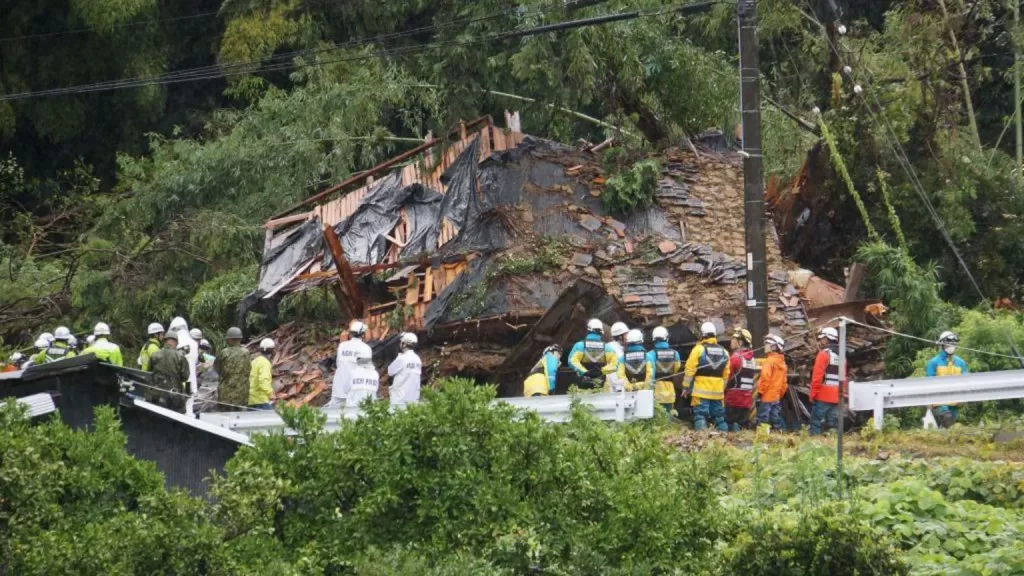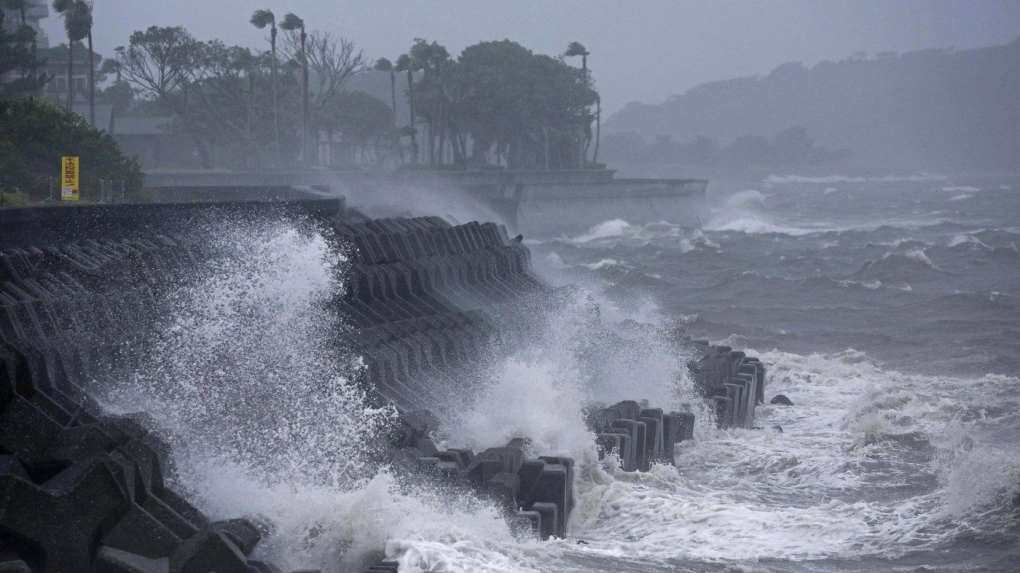A powerful typhoon named Shanshan has struck Japan’s southern island of Kyushu, home to 12.5 million people, leaving at least three dead and causing widespread disruption. The Japan Meteorological Agency reported that Shanshan made landfall near Satsumasendai city in Kagoshima prefecture at approximately 08:00 local time on Wednesday.

The agency warned of storms and high winds reaching up to 252 km/h (157mph), cautioning residents about the risks of landslides, flooding, and large-scale damage across the affected areas.
The storm’s first reported casualties were a couple in their 70s and a man in his 30s, all part of a family of five whose home in Gamagori, a city in central Aichi prefecture, was swept away late Tuesday. Local broadcaster NHK reported that the other two family members, women in their 40s, were rescued after an all-night recovery effort.
Meteorologists have forecast rainfall of up to 600mm over 24 hours in some areas of Kyushu, raising concerns about severe flooding and landslides. The island’s utility operator reported that approximately 255,000 houses are now without power due to the typhoon’s impact.
Social media videos depict the storm’s ferocity, showing large trees swaying violently, roof tiles being blown off houses, and debris hurled through the air as heavy rains lash the island.

The typhoon’s effects have extended beyond immediate structural damage. Toyota, the Japanese automotive giant, has shut down all 14 of its plants until Thursday morning, citing employee safety concerns and potential parts shortages caused by the storm.
Travel disruptions are widespread, with hundreds of flights to and from southern Japan cancelled and several high-speed train services impacted. Earlier this week, local governments issued evacuation advisories to 810,000 people in the central Shizuoka prefecture on Japan’s main island of Honshu, while an additional 56,000 were told to evacuate their homes in Kagoshima on Kyushu.
Typhoon Shanshan follows closely on the heels of Typhoon Ampil earlier this month, which caused minor injuries and damage but significantly disrupted air and rail travel. Prior to that, northern Japan experienced record rainfall when Tropical Storm Maria hit Honshu island.
Climate scientists have noted a concerning trend in the region’s typhoons. A study released last month indicates that these storms are forming closer to coastlines, intensifying more rapidly, and lasting longer over land due to climate change, potentially exacerbating their impact on coastal communities.



